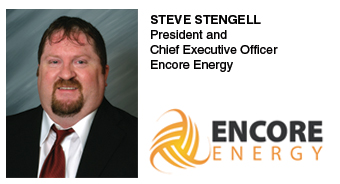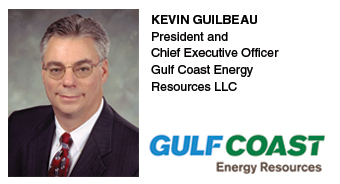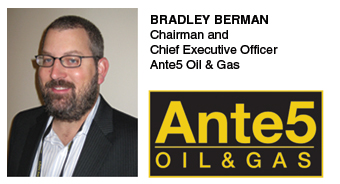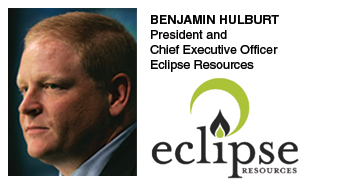
New Faces & Forces
Experienced Executives Form New Companies To Find Oil, Liquids
By Colter Cookson
From unconventional resource plays to traditional oil and gas reservoirs, opportunity is knocking in the upstream sector, and industry veterans and even entrepreneurs from other fields, are answering by establishing a new round of startup companies.
Those who accept the challenge of building an oil and gas company from the ground up have backgrounds as varied as the industry itself. But whether they are experienced horizontal drillers, Gulf Coast explorers, liquids seekers, diversified nonoperators, or shale play pioneers, they all have something in common: They are developing business models that take advantage of opportunities, leverage their expertise, and manage risk. Of course, they also are interested in generating a nice profit.
Steve Stengell, the founder of Encore Energy, is a case in point. “My goal is to develop a company that is worth $20 million-$50 million over the next several years,” he says. “What I really am interested in is spending the next few years developing specific properties, and then selling Encore to a larger company. However, if the market has changed–if oil is at $100 a barrel, natural gas is at $6.50 an Mcf, and the stock market is on the uptick–Encore’s management and I might find it more profitable to leverage the company on the public market.”
To prepare for that possibility, Stengell says Encore treats itself as a public company. In addition to performing financial audits each year, the company maintains an investor-oriented website, publishes press releases, and has a Facebook page. “If we get information out and investors following us, then if we decide to take the company public, we already have a public relations platform we can fly from,” Stengell explains.
At the same time, Encore is trying to position itself as an attractive acquisition for operators interested in buying proven assets. “My primary objective is to demonstrate to other operators that we are in the right areas, have alliances with the right people, and have as much proprietary data as larger companies,” Stengell says. “I assume that every time we go into an area, we are going to be the smaller company with properties that larger companies might be enticed to acquire, based on our results and reputation.”
Target Properties
Stengell indicates that Encore will focus on central East Texas. “I have experience working as an operator in both Texas and Oklahoma, including drilling horizontal wells in different areas of central East Texas,” reflects Stengell, who served as president and chief executive officer of a publicly traded operating company before establishing Encore.
His professional background also includes public relations, program syndication, project review, and other facets of the oil and gas business.
The company’s niche will be horizontal wells in conventional plays. “We are somewhat unique because we specialize in applying horizontal drilling and hydraulic fracturing to conventional sandstone reservoirs,” Stengell says. “In other words, we are using the technology developed for unconventional plays in conventional formations with existing vertical production.”
He acknowledges that conventional reservoirs may involve more geologic work than unconventional reservoirs. “A typical conventional reservoir has less critical mass than a blanketed unconventional formation such as the Eagle Ford, where you know you can drill 100 or more wells,” Stengell says. “You can find conventional reservoirs that are as good as or better than unconventional reservoirs, but they are not a blanket, so you need to make sure you drill in the right places. To do that, we use traditional geological methods, combined with the latest advancements in horizontal drilling and hydraulic fracturing.”
Once Encore finds an appealing reservoir, it needs to decide how long to make its laterals. “If we drill a 5,000-foot lateral instead of a 2,500-foot lateral, I can guarantee one thing: Our drilling costs are going to be higher, and our hydraulic fracturing costs are going to be almost twice as high,” Stengell says. “We have to ask whether the extra production is worth the added cost.”
According to Stengell, the company is focusing on oil wells with almost no gas production. “The price of oil is strong, so we have the potential for more profit and a greater margin for error as compared with a gas project,” he explains. “Gas also is more expensive aboveground. You need processing equipment, compressors, and additional contracts, so it is more complicated than selling oil from a stock tank.”
Optimizing Operations
Whether it is drilling for oil or gas, Stengell says Encore looks to hire contractors and consultants with regional expertise and flawless reputations. “When we plan a well, we talk to the operators of neighboring wells to figure out who they worked with and what they thought,” Stengell reports. “We will keep asking until we find the right engineer or contractor. Horizontal wells are too expensive to hire the wrong contractor.”
Stengell adds that his company leverages large companies and individual experts. “I like to use large engineering firms to oversee the majority of our operations, because those firms are like law offices: They have someone specialized in everything, so if there is a problem, they can handle it,” he details. “At the same time, we hire freelance engineers that specialize in certain areas, certain formations, or certain frac treatments. We want to make sure we have the right person for each job.”
Stengell says Encore also draws on the expertise of its larger peers. “As a smaller company, we try to align our acreage or projects near larger companies so we can benefit from their research and development,” he relates. “The larger company wants to be helpful because our results affect the value of its reserves, and working with us sets it up to buy our acreage in the future.”
Gulf Coast Explorer
With many oil and gas companies shifting capital to resource plays, Gulf Coast Energy Resources LLC sees an opportunity in that region’s conventional plays. “In an area with lower competition, acreage costs less,” notes Kevin Guilbeau, the company’s president and chief executive officer. “The opportunity set is also much larger, and there are fewer people going after it, so we have a higher chance of getting the opportunities we want.”
GCER focuses on three areas: onshore Texas, onshore Louisiana, and the shallow-water Gulf of Mexico. “Our strategy is to create value by exploring proven hydrocarbon trends in the Gulf Coast,” says Guilbeau. “We are an exploration company, but we will acquire producing fields if they include opportunities for exploration.”
Guilbeau has considerable experience exploring the Gulf Coast. During a 15-year career at Shell Oil Co., he held leadership roles in both the Gulf Coast onshore and the Gulf of Mexico. After leaving Shell, he served as vice president and general manager of the Gulf of Mexico for Dominion E&P, and as executive vice president and chief operating officer for LLOG Exploration Co.
GCER has good cause to focus on the Gulf Coast, Guilbeau says. “The hallmark of the region is excellent reservoir rock and high flow rates for oil and gas, which mean high rates of return,” he states. “There is more risk than in a resource play, but if you manage the risk, the payoff can be high.”
To minimize its exploration risk, Guilbeau says his company will apply advanced seismic techniques. “Most of the management team is used to working in the Gulf of Mexico, which has been a proving ground for seismic technology for decades,” he notes. “As we started to look onshore, we were pleasantly surprised to see the quality and amount of 3-D seismic data available. Much of the onshore seismic has been shot in small surveys, so we are purchasing several data sets, merging them, and reprocessing the data to come up with a better product.”
In the process, GCER is using techniques that have been perfected offshore, such as attribute analysis and amplitude variation with offset (AVO), which allow direct detection of hydrocarbons. “These techniques are not foolproof, but they definitely will increase our success rate,” Guilbeau says.
Target Trends
“We still are evaluating trends for potential investment; however, we definitely are interested in the Wilcox, which is where we acquired our first property,” Guilbeau relates. “We have used AVO successfully in the development wells we have drilled there, and we think there still is quite a bit of running room.”
Guilbeau adds that GCER also is interested in the Yegua-Cook Mountain trend in Southeast Texas. “This trend has been one of the more active onshore trends for the past eight years, and companies have achieved high success rates using amplitudes there,” he points out.
Offshore, Guilbeau says his company is focusing on the Shelf, which requires less capital than deeper waters. “When we started looking at the Shelf with some of the companies we have partnered with during our careers, we saw great opportunities to produce liquids-rich gas in less than 200 feet of water,” Guilbeau recalls. “We have farmed in to eight of those prospects.”
Whether it is exploring offshore or onshore, Guilbeau says GCER likes to partner with other companies. “In general, we prefer a 50 percent average working interest throughout our portfolio,” he indicates.
According to Guilbeau, the company wants to operate at least 50 percent of its portfolio. “Operations are critical to controlling timing and cost,” he says. “Also, as a startup with an eye toward an exit strategy in five to seven years, we recognize that buyers like to have high percentages of operated properties.”
Liquids Seeker
Like many oil and gas companies, Torchlight Energy Resources plans to focus on oil and liquids-rich gas. “Since my investors and I started looking at forming the company in 2009, oil prices have doubled,” notes Tom Lapinski, the company’s chairman and chief executive officer. “Prices are at a plateau today, but once worldwide economies start to recover, we expect additional upward pressure. That is what we are trying to capture.”
For now, that means going after liquids. “We will take gas if we get it, but our primary focus has been liquids,” Lapinski says. “Toward that end, we have secured interests in South Texas’ Lower Cretaceous Eagle Ford, where we have two producing wells.”
Lapinski describes the Lower Cretaceous as a resource play. “Many people only see the Eagle Ford, but we look at the entire Lower Cretaceous as a resource play, because we see production from the Austin Chalk and Buda throughout Wilson, Gonzales, and Rio counties. These formations are similar to the Eagle Ford, where I do not think there has been a legitimate dry hole,” he explains.
With 44 years of industry experience, Lapinski is a geophysical engineer by training and served 30 years at Amoco Production Company. After retiring from Amoco, he joined the Stephens Group to assist in developing international oil and gas opportunities, and has worked as a consultant. “We are seeing many Buda wells being drilled horizontally in what I suspect is the front wave of the next major resource play,” he says. “The Austin Chalk has been developed vertically and horizontally for 20-30 years, but we now are seeing a resurgence in activity as people target the lowest portion, where we get great log responses.”
According to Lapinski, Torchlight plans to develop its Cretaceous acreage slowly. “As a small company with limited capital, we cannot afford to make mistakes drilling long laterals, because one mistake on a $6 million-$7 million well could be devastating,” he says. “For now, we are drilling vertical wells and capturing what value we can.”
Lapinski says the company will drill horizontal wells in its target formations after it has strengthened its cash flow and the industry has gained more experience. “I look at this area much like other resource plays, such as the Bakken,” he says. “The first horizontal wells cost $8 million-$10 million, but today, the well cost has been cut in half. Oil and gas companies have been drilling in the Eagle Ford for only three years, so we are still on the learning curve. But the industry is astute, and it will not take long to figure out how to drill Eagle Ford horizontals more economically.”
Other Acreage
In addition to targeting Cretaceous trends in South Texas, Torchlight is exploring the Mississippi Limestone play in the Kansas and Oklahoma portion of the Greater Anadarko Basin. “We became interested in this area because several companies have had good results,” Lapinski relates. “The wells have modest depths, so it is possible to drill and complete them for $500,000 each.”
The company also has an oil project in the southwestern corner of Nebraska, Lapinski reports. “This is a traditional Denver-Julesburg play, where we are looking for small structures with channel sands,” he describes. “We have identified several, so it is a matter of getting out there to drill them.”
Lapinski predicts the wells will offer solid returns and long-lived production. “We conducted a statistical study of the wells in Nebraska that suggests ours will have initial oil production rates between 80 and 120 barrels a day, with ultimate recoveries between 100,000 and 120,000 barrels,” he says. “The production will decline in the first year or so, then flatten and continue for 20-30 years.”
Torchlight also is pursuing 5,100 acres near Fort Stockton in West Texas. “This area does not fit our usual model,” Lapinski comments. “Instead of being near our other blocks, which is important for operational efficiency, it is isolated. However, the terms are excellent, so we are trying to grab it.”
Lapinski points out that all of the areas where Torchlight has acreage have been well explored. “We want to avoid high-risk exploration, so we try to stay close to production, where the risk of a dry hole is low,” he says. “Sometimes we have to pay a premium for that, but early in our history, that is the prudent thing to do.”
He adds that the company tries to diversify itself geographically and geologically. “I would rather have a small interest in eight or nine properties in different areas than have a high interest in one or two,” Lapinski says. “To some extent, our business is statistical. The more opportunities we are exposed to, the better our chance of getting some very good results.”
According to Lapinski, the company prefers not to operate. “If we were to operate, we would need people to handle all the tasks that go into a drilling program,” he notes. “As a new company, we want to keep our general administrative cost structure as low as possible to increase our profits.”
Bakken Nonoperator
For Ante5 Oil & Gas, being a nonoperator is a long-term strategy. In fact, learning about the nonoperator business model is what convinced Ante5 (a spinoff of the company that founded the World Poker Tour) to get involved in oil and gas.
“The more I learned about the Williston Basin and the nonoperator business model, the more excited I became,” recalls Bradley Berman, who played a key role in the merger between Ante4 and Plains Energy, which created Voyager Oil & Gas and led to Ante5’s formation as a holding company for assets Voyager did not want. Berman briefly served on Voyager’s board and has 18 years’ experience in the gaming industry.
“I felt Ante5 could acquire the resources and expertise necessary to run a successful nonoperator business, so in August 2010, I convinced the board to enter the oil and gas industry,” says Berman, who became the company’s chairman and CEO at that time. “As a nonoperator, we leverage operators’ knowledge and expertise in exploration and production, which allows us to focus on acquiring high-potential leases and accessing low-cost capital. The model involves very little overhead, making us extremely efficient at deploying that capital.”
He adds that the nonoperator model leads to considerable diversity. “For the 28 wells in which we hold an interest, we are partnered with 13 operators,” he reports. “We are diversified not only in terms of wells and operators, but also geographically. Our yet-to-be-drilled acreage is spread across many of the most promising regions within the Bakken and Three Forks play.”
The model also scales well, Berman continues. “Right now, with more than 10,000 acres, we only have four full-time employees: a chief financial officer, a chief operating officer, a land analyst, and myself,” he says. “As we acquire more acreage, our head count will grow, but only at a very slow pace. Ante5 will continue to build its lease portfolio, access the public capital markets, and manage its growing well position with a small group of talented individuals.”
To show how successful the nonoperator model can be, Berman points to Northern Oil & Gas, which has applied the model in the Williston Basin for several years. According to online stock trackers, the company’s stock value increased from $5 in April 2007 to $20 in September 2011.
Like Northern Oil & Gas, Berman says Ante5 will focus exclusively on the Bakken and Three Forks play in North Dakota and Montana. “This area offers low-risk, but extremely profitable oil production,” he says. “It is a new play with highly fractured mineral ownership and high drilling activity, so we have the opportunity to lease mineral interests that will get drilled quickly.”
Acquiring Acreage
To identify potential acquisitions, Ante5 has formed a strategic alliance with a geologist and a landman based in Bismarck, N.D., who each have 30 years of experience. “They put packages together, which we evaluate using a third-party geologist,” Berman relates. “As part of our commitment to data-driven decision making, we also conduct a rigorous internal review, wherein we consider well performance and drilling activity trends in each prospect, as well as which operator likely will operate the wells.”
The partnership started with a 3,700-acre package, which Ante5 bought using cash and stock. “We wanted our strategic partners to have a meaningful stake in Ante5 so they would have a reason to continue to feed us high-quality acreage,” Berman says.
Berman says the landman and geologist have been great partners. “We started 2011 with 3,700 acres and almost no production. We will finish 2011 with more than 10,000 acres and expect to have participating interests in about 40 wells, which combined, will be close to one net well,” he reports.
To ensure it will have the capital to handle an unexpected surge in drilling, Ante5 has obtained a $10 million revolving credit facility. “The facility is undrawn, but it is available, if we have more drilling than anticipated,” Berman says.
He adds that in July, the company raised $5.6 million through a private placement to fund additional lease acquisitions.
“We are a small company that is growing rapidly,” Berman summarizes. “We have had the good fortune to acquire appealing acreage at a very competitive price. Ante5 has 18 producing wells and another 10 that will come on line soon, so we expect to grow significantly.”
Berman says the company has plenty of room to expand. “We can grow in two ways,” he reports. “The first is through our existing acreage being developed. After the initial wells are producing, operators usually come back to drill infill wells. These wells will be even better than the originals as technology improves and operators gain expertise in the Bakken and Three Forks formations.”
The second way to grow is by acquiring additional acreage. “Because we are interested in small parcels nearby operators chose not to pursue, we see a great opportunity to buy acreage in areas we expect to be drilled within a short time,” Berman says.
Utica Explorer
After distinguished careers at Rex Energy, brothers Benjamin W. and Christopher K. Hulburt partnered with Tom Liberatore, who previously served as vice president and Appalachian region manager at Cabot Oil & Gas, and several other regional experts to form Eclipse Resources. According to Hulburt, who is president and chief executive officer, the management team hopes to “eclipse” its members’ previous accomplishments. To do that, he says they will be exploring the region’s unconventional plays.
“Since we obtained funding, we have been acquiring properties in the Appalachian Basin, with a focus on the Utica Shale in Southeast Ohio,” Hulburt reports.
He says the company is targeting the Utica because of its high liquids content.
Because the Utica is a new play, the exact nature of the liquids content is unknown, Hulburt allows. “We expect the Utica to have three thermal maturity legs, much like the Eagle Ford, with a dry gas area in the west, a wet gas area in the center, and an oil window in the east,” he says. “We have focused on the wet gas and condensate windows, or at least the areas where we think they are.”
The fairway runs from Trumbull County in Northwest Ohio to Washington County in Southeast Ohio, Hulburt assesses. “It extends into Pennsylvania, but it gets deeper there, so we think the liquids portion will be in Ohio,” he relates. “Eclipse is focusing on Noble, Belmont, Guernsey, and Monroe Counties in Ohio, where we should get liquids-rich natural gas and condensate.”
Through acquisitions and an ongoing grass-roots program, the company has acquired 20,000 acres, Hulburt reports. “We are starting to lay out an initial drilling plan on multiwell pads,” he says. “It looks like we could have 15-well pads with 50-55 horizontal locations.”
The wells will target depths between 6,000 and 8,000 feet, Hulburt says, reporting that the company planned to spud its first well in October and have it completed by year’s end. “That well will have a lateral length of between 3,500 and 4,500 feet,” he indicates. “We envision going longer than that on future wells, so we probably are looking at per-well drilling costs between $5 million and $8 million.”
Optimism
Hulburt says he is excited about the Utica. “Because of the liquids content, we think the play could yield much higher returns than the Marcellus,” he exudes.
But like any shale, understanding the Utica will take time. “Many of the public markets generally assume that because a shale is relatively uniform, it requires cookie-cutter development and every well will hit,” he observes. “Early on, that is not the case.”
As oil and gas companies prove up a play, the focus transitions to logistics, Hulburt notes. “Because our management team has done nothing but shale projects for the past decade, we have a good understanding of how to manage water and environmental concerns, get the proppant we need, and handle all the other tasks that go into making a shale play work,” he says.
Regarding water management, Hulburt says Ohio has some advantages over Pennsylvania. “The geology in Ohio is much more conducive to disposal wells than the geology in Pennsylvania,” he explains. “There are already several disposal wells, and it is much easier to get permits for them. That is good, because disposal wells are the most environmentally responsible way to get rid of frac flow-back water, and they are much less expensive than the water treatment technology the Marcellus Shale ultimately will require.”
Hulburt says Eclipse plans to continue being a significant player in the Appalachian region, and eventually will look at expanding into shale plays across the country. “Our number one objective is to grow a profitable, well-respected and environmentally responsible company in the Appalachian Basin,” he states.
For other great articles about exploration, drilling, completions and production, subscribe to The American Oil & Gas Reporter and bookmark www.aogr.com.










